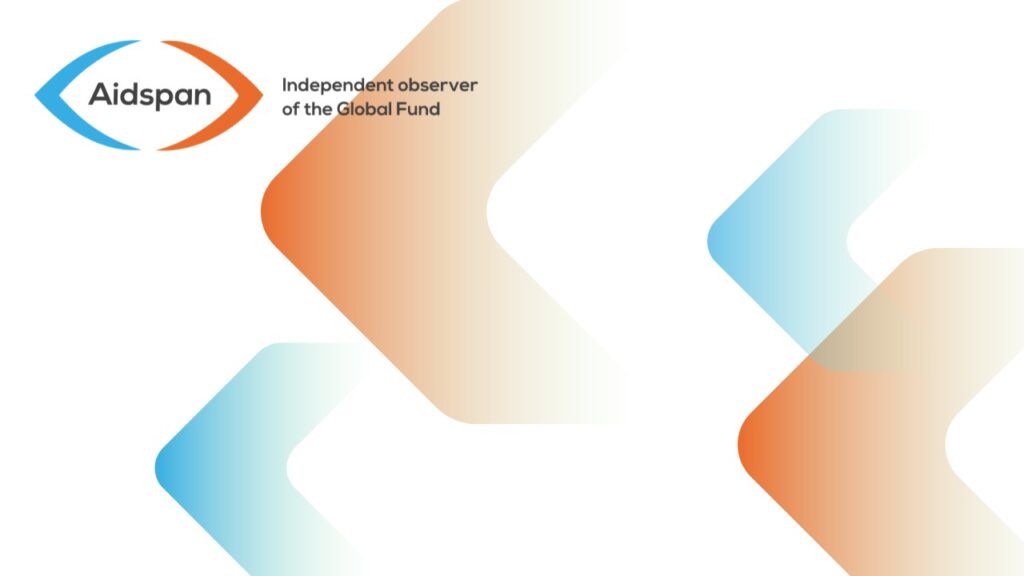
NEW UNAIDS REPORT SHOWS THAT FULLY FUNDING THE HIV RESPONSE WILL GET AFRICA BACK ON TRACK IN TERMS OF HEALTH, SOCIAL AND ECONOMIC ACHIEVEMENTS
Author:
AIdspan
Article Type:Article Number: 8
Fully financing the HIV response to get back on track to achieve the 2030 goals will produce substantial health, social and economic gains in African countries. These findings are highlighted in a new report, A Triple Dividend: The health, social and economic gains from financing the HIV response in Africa.
On 12 April, the Joint United Nations Programme on HIV and AIDS (UNAIDS) launched a new report showing that fully funding the HIV response would result in significant benefits in other areas. Research and analysis by Economist Impact, conducted across 13 African countries, demonstrates that fully financing the HIV response will saves millions of lives and would produce substantial health, social and economic gains. The report, A Triple Dividend: The health, social and economic gains from financing the HIV response in Africa, can be accessed here.
The reports shows that not only would there be between 40% and 90% fewer new HIV infections, depending on the country, but investing in the HIV epidemic would also enhance educational outcomes, especially for young women and girls, reduce gender inequalities and boost economic growth.
|
“This report comes at a critical time with evidence that should act as a catalyst for political decisions to ensure full HIV funding, that will have substantial social and economic outcomes. It will put African countries on a path towards building more resilient healthcare systems and be better prepared for future pandemics.” Winnie Byanyima, Executive Director, UNAIDS |
If the targets for fully financing the HIV response are met in South Africa for example, women aged 15-19 would account for almost 15% of the reduction in new HIV infections by 2030, despite making up less than 5% of the total population. In addition, increased HIV investments today would contribute to wider and sustained economic gains by 2030, and ultimately free up scarce resources going forward to address other critical health priorities. The report projects that South Africa’s GDP could be 2.8% higher and Kenya could see its GDP rise by 1.1% by 2030 if HIV funding targets are met.
|
“The United States Government was proud to join other United Nations Member states to adopt bold new commitments for AIDS financing by 2025. Ending AIDS as a public health threat requires political, programmatic and financial leadership. All government sectors, including the Ministries of Finance, play a key role in increasing domestic financing to ensure that vulnerable populations are reached equitably and receive the prevention, care and treatment services they need.” Ambassador Dr John N. Nkengasong, U.S. Global AIDS Coordinator and Special Representative for Global Health Diplomacy |
The report demonstrates that failing to mobilise the required funding to end AIDS as a public health threat by 2030 has substantial health, social and economic costs.
To assess these costs, Economist Impact, supported by UNAIDS, analysed scenarios in which 100% of financial resources required to meet the 2021 Political Declaration on HIV and AIDS targets were compared to a business-as-usual funding scenario where HIV current financing and service levels are maintained. It showed that the resulting improvements in health outcomes would also increase educational gains, which combined, generate increased productivity of both current and future generations, contributing to wider economic benefits.
| “Countries in Africa are up against significant challenges to secure the necessary resources to increase domestic funding for the HIV response,” said Rob Cook, clinical programme director at Economist Impact. “Policymakers will need to think innovatively about how they can use existing financing more effectively. Drawing on existing community-centred networks could play a key role in both mobilising additional resources for the HIV response and ensuring that it is equitable and reaches those most in need.” |
Recent global crises, including COVID-19 and the war in Ukraine, have hampered efforts to address the HIV epidemic and placed strong pressure on financing for health and other Sustainable Development Goals. Young women, children and other vulnerable populations will pay the highest price as pre-existing health and socio-economic inequalities widen. The significant fiscal challenges facing African countries has limited their ability to increase domestic financing of the HIV response and constrained overall health budgets. Economist Impact’s research points towards the need for policies that aim to both generate new revenue streams and maximise the use of existing funds and resources.
UNAIDS estimates that low and middle-income countries will need investments of US$ 29 billion annually to meet targets of ending AIDS as a public health threat by 2030. Funding levels in 2020 fell almost 30% below targets, making subsequent resource needs harder to achieve and putting upcoming targets further out of reach. UNAIDS projects more than 7 million AIDS-related deaths by 2030, but half of those can be averted if the HIV response is fully financed and policies are rightly oriented.
Global 2025 targets include reducing new HIV infections to under 370 000 (from 1.5 million in 2021), reducing HIV infections among adolescent girls and young women to less than 50 000 and reducing the number of people dying from AIDS-related illnesses to less than 250 000 (compared to 650 000 in 2021).
